Caribbean Food: Basic Overview
Common Ingredients
Common Cooking Methods
Courses
Meals
Key Taste
Eating Etiquette
Meal Presentation
Culinary Festivals
Influence and Fusion
Popular Types of Caribbean Food
-
Rice dishes
Rice dishes in Caribbean cuisine often combine rice with legumes, such as peas or beans, and are infused with rich flavors from coconut milk, herbs, and spices like thyme and garlic.
The rice serves not only as a staple side but also as a main dish when cooked with meats or seafood, embodying the fusion of African, indigenous, and European culinary traditions.
-
Curries
Curries in the Caribbean showcase the profound Indian influence on the region’s cuisine, featuring a symphony of spices that include curry powder, cumin, and coriander.
These dishes are characterized by their vibrant colors, aromatic fragrances, and complex flavors, often combining tender meats, seafood, or vegetables with a rich, spicy sauce.
Enjoyed with rice or flatbreads, these curries are a staple in family dinners and communal gatherings.
-
Cakes and pastries
Cakes and pastries in the Caribbean range from rustic, traditional treats to elaborate, festive creations, often featuring local ingredients like tropical fruits, spices, and rum.
From moist, boozy rum cakes celebrated during holiday seasons to handheld pastries filled with spiced meats or sweet fillings, these treats are integral to Caribbean celebrations, tea times, and street food culture.
-
Stews
Caribbean stews are characterized by their thick, flavorful gravies and the tender, slow-cooked meats or seafood at their heart.
From the rich, coconut milk-based stews to the tangy, tomato-infused varieties, these dishes are a celebration of Caribbean flavors and communal dining.
-
Fried dishes
From crispy, twice-fried plantains known as tostones to savory fritters and fried seafood, these dishes are a staple in Caribbean street food and casual dining.
They are often served with zesty dipping sauces or simple accompaniments like a squeeze of lime.
Fried dishes in the Caribbean are a celebration of the simple joys of food, shared among friends and family at markets, beachside stalls, and home kitchens.
Caribbean dishes are delicacies commonly savored in the region that encompasses the Caribbean Sea, its islands, and the surrounding coasts.
The Caribbean cuisine is a fusion, primarily influenced by African delicacies, Creole, Cajun, Amerindian, European specialties (notably British, Spanish, and Portuguese), and Asian gastronomy such as Indian, and Chinese cuisines.
Key features of Caribbean cuisine include a wide variety of seafood, meats (chicken, goat, pork), vegetables, and tropical fruits, with staples like rice, beans, and root vegetables.
The cuisine is marked by its bold and spicy flavors, with a reliance on spices such as allspice, nutmeg, and hot peppers. Common cooking methods include grilling and slow cooking, with jerk preparation standing out as particularly iconic.
Additionally, rum plays a significant role in both cooking and traditional beverages, owing to the region’s sugar cane heritage. Meals in the Caribbean are typically communal, reflecting the social importance of food and dining in the culture.
I’ll explore not just the popular dishes but also dive into traditional favorites, their worldwide popularity, and the health perks they offer.
Next up, I’ll show you around the influences shaping Caribbean cuisine, point out the top places to eat, and give you the inside scoop on unique street foods – where to find them, their role in local celebrations, and the dos and don’ts of dining culture.
You will also see how Caribbean food compares to African dishes and share tips on the perfect food and drink pairings.
Ready to start exploring? Let’s go!
52 Popular Caribbean Dishes with Filters
Explore the colorful flavors of Caribbean cuisine with the most popular 52 dishes, sorted by popularity. Discover your next favorite dish by filtering through ingredients, flavors, cooking methods, types of dishes, and meal times.
You can also choose from traditional favorites, national specialties, innovative fusion creations, street food, or exotic delicacies.
Jamaican Jerk Chicken
- Street Food
- Traditional
Jamaican jerk chicken is a quintessential Jamaican dish, known for its spicy, aromatic, and smoky flavor profile.
The chicken is marinated in a mixture known as jerk seasoning, which includes allspice, Scotch bonnet peppers, thyme, and other spices, then slow-cooked over pimento wood or grilled to achieve a unique smoky taste.
Jerk chicken is not just a dish but a cooking style that originated from the Maroons, escaped African slaves in Jamaica.
Celebrated at various food festivals in Jamaica and the Caribbean, especially the annual Jerk Festival, jerk chicken is a cultural staple enjoyed by both locals and visitors.
Rum Cake
- Traditional
Rum cake is a beloved dessert in the Caribbean, known for its moist texture and rich flavor infused with rum. Rooted in the colonial era, this traditional holiday treat evolved from British holiday puddings.
The key to its unique taste is the dried fruit, which is soaked in rum for several months before being mixed into the batter. The cake is then baked and often finished with a rum glaze that further enhances its moistness and flavor.
Rum cakes are especially popular during the Christmas season across the Caribbean and in other regions where Caribbean diaspora communities celebrate their heritage.
Ackee and Saltfish
- National
- Street Food
- Traditional
Ackee and saltfish is Jamaica’s national dish, consisting of ackee, a fruit native to West Africa, and salted fish, typically cod.
This dish is a delightful combination of the soft, buttery texture of ackee and the salty, flaky fish, often sautéed with onions, tomatoes, and spices, creating a rich, savory flavor.
A staple for breakfast in Jamaica, ackee and saltfish can also be enjoyed as a main meal. It’s commonly served with breadfruit, hard dough bread, dumplings, or boiled green bananas.
This dish is a symbol of Jamaican culture and is especially prominent during important celebrations and gatherings.
Roti
- Fusion
- Street Food
- Traditional
Roti is a type of flatbread originating from the Indian subcontinent that has become an integral part of Caribbean cuisine, especially in Trinidad and Tobago and Guyana, where it is often considered a traditional food.
In the Caribbean, ‘roti’ refers not only to the bread itself but also to a wrap filled with curried dishes such as chicken, goat, shrimp, or vegetable curries.
There are several famous variations, including “Dhalpuri” filled with ground yellow split peas and “Paratha,” known locally as “Buss Up Shut” for its soft, torn layers resembling a tattered shirt.
Roti is a popular street food and a staple in home cooking, enjoyed widely in the Caribbean, Suriname, and amongst Caribbean diaspora communities.
It is particularly savored during religious and cultural celebrations, including Diwali and Eid, reflecting the fusion of Indian and Caribbean culinary traditions.
Mofongo
- National
- Street Food
- Traditional
Mofongo is a traditional Puerto Rican dish with roots in African cuisine, showcasing the island’s rich cultural fusion.
This dish is made from fried green plantains mashed together with garlic, salt, and olive oil, often filled or topped with a variety of meats such as shrimp, chicken, or pork, and served with a side of broth.
Mofongo is celebrated as a versatile dish, with variations including the addition of different types of meat or seafood, and even ripe plantains for a sweeter version.
It is a staple in Puerto Rican households and restaurants, enjoyed across the Caribbean and in Puerto Rican diaspora communities, particularly in the United States.
Mofongo is often featured during special occasions and gatherings, highlighting its significance in Puerto Rican culinary traditions.
Cuban Sandwich
- Fusion
- Street Food
Cuban sandwich, also known as a Cubano, is a traditional fusion sandwich that originated in cafes catering to Cuban workers in the early Cuban immigrant communities of Florida, especially Key West, and Tampa.
Distinguished by its unique composition, the Cuban sandwich features ham, roasted pork, Swiss cheese, pickles, mustard, and sometimes salami on Cuban bread.
The inclusion of salami is specific to the Tampa version, reflecting the Italian influence on the city. The Cuban Sandwich is a staple street food and a symbol of cultural identity among the Cuban expatriate community.
It is particularly popular in Florida, Cuba, and among Caribbean communities in the United States. The Cuban Sandwich is often enjoyed during various festivals and gatherings, serving as a culinary bridge between Cuban and American cultures.
Curry Goat
- Fusion
- Street Food
- Traditional
Curry goat is a traditional Caribbean dish, particularly celebrated in Jamaica, where it is considered a culinary staple.
This savory dish is made from goat meat marinated and slow-cooked in a rich blend of spices, including curry powder, which is a nod to the Indian influence on Caribbean cuisine.
Curry goat is a popular feature at social gatherings, festivals, and special occasions across the Caribbean, especially in Jamaica, Trinidad and Tobago, and other islands.
It is also enjoyed in countries with significant Caribbean diaspora populations, such as the United Kingdom, the United States, and Canada.
Callaloo
- National
- Street Food
- Traditional
Callaloo is a versatile dish found throughout the Caribbean, with variations existing from one island to another.
At its core, callaloo is a leafy green stew made from the callaloo plant, often mixed with coconut milk, okra, and an assortment of meats or seafood, seasoned with local spices and herbs.
In Trinidad and Tobago, for example, it’s traditionally made with dasheen leaves and can include crab, making it a rich and hearty meal. Its roots trace back to West Africa, reflecting the deep African influence on Caribbean cuisine.
Callaloo is not just a dish but a cultural staple, enjoyed as both a side and a main dish, and is particularly popular during festive occasions and Sunday meals.
Empanada
- Street Food
- Traditional
Empanada, also known as pastel in some regions, is a type of baked or fried pastry stuffed with a variety of fillings, which can range from meat, cheese, vegetables, or fruits.
Widely popular in Latin American and Hispanic cuisines, empanadas in the Caribbean often feature distinctive island flavors, the Caribbean version often includes distinctive island flavors such as spicy meats, seafood, or local vegetables.
In the Caribbean, empanadas are a traditional snack or meal, enjoyed at any time of day and often featured at festivals and celebrations.
Variations of empanadas can be found in several Caribbean countries, including Puerto Rico, the Dominican Republic, and Cuba, with each country having its unique twist on the filling and dough.
Arroz con Pollo
- Traditional
Arroz con pollo, translating to “rice with chicken,” is a traditional dish widely enjoyed across Latin America and the Caribbean, with each region offering its unique spin.
At its core, arroz con pollo is rice and chicken cooked with a blend of spices and vegetables (such as peas, carrots, and bell peppers), and sometimes beans, creating a flavorful one-pot meal.
Variations can include the addition of saffron or annatto for color, olives, capers, and different types of rice. Arroz con pollo is a common family meal, celebrated for its simplicity and comforting qualities.
It is particularly popular in countries like Puerto Rico, Cuba, and the Dominican Republic and is often served at gatherings and festive occasions.
Jamaican Patty
- Street Food
- Traditional
The Jamaican patty is a beloved pastry that epitomizes Jamaican cuisine, known for its flaky, turmeric-infused crust and savory filling, typically consisting of seasoned ground beef.
However, the patty has evolved to include a wide range of fillings, including chicken, vegetables, shrimp, and even soy-based versions for vegetarians.
This fusion dish reflects the island’s multicultural influences, making it a popular street food and snack across Jamaica and among Caribbean communities worldwide.
Jamaican patties are often enjoyed as a quick meal or snack and have become a staple at events and gatherings.
Conch Fritters
- Street Food
- Traditional
Conch fritters are a traditional Caribbean appetizer, particularly emblematic of the Bahamas where they are considered a national dish.
This delicacy consists of conch meat that is battered and deep-fried until golden brown, often accompanied by a variety of spices and vegetables such as onions, peppers, and celery to enhance the flavor.
Variations may include different spice mixes or additional ingredients like corn or bell peppers. Conch Fritters are widely enjoyed across the Caribbean islands and have also gained popularity in coastal regions of the United States, especially in Florida.
These fritters are a common sight at various festivals and gatherings, celebrating the rich seafood heritage of the Caribbean.
Oxtail Stew
- Traditional
Oxtail stew is a hearty and flavorful dish popular in Caribbean cuisine, particularly in Jamaica. This traditional stew is made by slow-cooking oxtail with a variety of spices, beans (often butter beans), and vegetables, resulting in tender meat and a rich, savory broth.
Oxtail stew is a beloved comfort food in the Caribbean and has gained popularity in other regions, including North America and the United Kingdom, where Caribbean communities have introduced this delicious dish.
It’s commonly enjoyed with sides like rice and peas, making it a staple at family gatherings and special occasions.
Tostones
- Street Food
- Traditional
Tostones, also known as patacones in some regions, are a popular street food and side dish in Caribbean cuisine, made from sliced green (unripe) plantains that are twice-fried to achieve a crispy exterior and soft interior.
After the initial frying, they are smashed into flat rounds and fried again until golden brown. Tostones are known for their versatility, often served with a variety of dipping sauces or toppings, such as garlic sauce or a mixture of ketchup and mayonnaise.
This dish is widespread across the Caribbean, particularly in Puerto Rico, the Dominican Republic, and Cuba, and has also found popularity in Central and South American countries.
Tostones are commonly enjoyed as a snack, appetizer, or accompaniment to main dishes and are especially prevalent in coastal regions where plantains are abundant.
They are often associated with casual gatherings and beach outings, adding a festive touch to everyday and holiday meals alike.
Rice and Peas
- National
- Traditional
Rice and peas is a quintessential dish in Caribbean cuisine, recognized as a national dish in Jamaica but widely enjoyed across the Caribbean islands.
This dish combines rice with legumes, traditionally pigeon peas or kidney beans, and is cooked with coconut milk and flavored with various spices such as thyme, scallions, and garlic.
Rice and peas is a staple side dish that accompanies a variety of main courses, particularly grilled or jerk meats. It embodies the fusion of African and indigenous Caribbean culinary traditions.
The dish is a Sunday dinner staple and is especially significant during celebrations and festivals, including Christmas and Easter, highlighting its cultural importance.
Lechón Asado
- National
- Traditional
Lechón asado is a traditional dish widely celebrated in the Caribbean, particularly in Puerto Rico and Cuba, where it holds a place of honor as a festive and communal meal.
This dish involves the slow-roasting of a whole pig over an open fire until the skin is crispy and the meat tender and flavorful, often marinated with a mixture known as “mojo” made from garlic, herbs, and citrus juice.
Variations include different marinades or seasonings, reflecting local tastes. Lechón Asado is central to major celebrations such as Christmas, New Year’s Eve, and large family gatherings, symbolizing feasting and unity.
Pernil
- Traditional
Pernil is a traditional Latin American and Caribbean dish, particularly beloved in Puerto Rico, where it is considered a staple of festive occasions, especially Christmas and New Year’s celebrations.
Pernil consists of a slow-roasted marinated pork leg or shoulder, known for its tender, flavorful meat and crispy skin. The marinade typically includes a blend of garlic, oregano, vinegar, and other spices, which infuse the pork with rich flavors.
In the Caribbean, pernil is often served with rice, beans, and plantains, making it a centerpiece of holiday feasts and family gatherings. This dish reflects the Spanish culinary influence in the region, adapted over time to incorporate local tastes and ingredients.
Doubles
- National
- Street Food
Doubles is a popular street food originating from Trinidad and Tobago, traditionally served as a breakfast dish but enjoyed throughout the day.
It consists of two baras (flat fried bread) filled with curried chickpeas, topped with various condiments such as cucumber, mango, coconut, tamarind, and pepper sauces.
While doubles primarily remain a staple of Trinidadian cuisine, they have gained popularity in other Caribbean countries and among Caribbean communities abroad, particularly in the United States and Canada.
Pollo Guisado
- Traditional
Pollo guisado is a traditional Caribbean stew, known for its tender chicken simmered in a flavorful broth with herbs and spices like garlic, oregano, and cumin.
Variations exist across the Caribbean; for instance, the Dominican Republic version includes olives and capers, while Puerto Rico’s might have potatoes and carrots.
This dish is a comfort food staple, popular in the Caribbean and Latin American countries, often served at family gatherings and festive occasions.
Fish Curry
- Fusion
- Traditional
Fish curry in the Caribbean is a vibrant and flavorful dish that reflects the region’s diverse culinary influences. This dish typically features fresh local fish simmered in a rich sauce made with coconut milk, curry spices, and a variety of herbs and vegetables.
Each island has its own version, with some popular variations including the addition of tamarind for a tangy flavor or Scotch bonnet peppers for heat.
Fish curry is enjoyed in many Caribbean countries, as well as in places with significant Caribbean communities, such as the UK, the US, and Canada. It’s a common sight at family gatherings and community celebrations.
Chicken Curry
- Fusion
- Traditional
Chicken curry in the Caribbean is a testament to the fusion of cultures that characterizes the region’s cuisine. This dish combines tender pieces of chicken with a blend of curry spices, coconut milk, and sometimes fruits like mango or pineapple for added sweetness.
The dish varies from one island to another, with some versions being spicier and others more aromatic, depending on the local palate and available ingredients.
Chicken curry is a beloved dish across the Caribbean, particularly in Trinidad and Tobago and Guyana, where the Indian influence is strong. It’s often served at various events and celebrations, making it a staple of Caribbean festive cuisine.
Shrimp Curry
- Fusion
- Traditional
Shrimp curry is a delightful Caribbean seafood dish that combines succulent shrimp with a rich and aromatic curry sauce. This dish is a fusion of the diverse culinary influences in the Caribbean, incorporating spices and flavors from African, Indian, and local traditions.
Shrimp curry is often made with coconut milk, giving it a creamy texture, and is spiced with a blend of curry powder, thyme, garlic, and Scotch bonnet peppers for heat.
It’s popular across the Caribbean islands, especially in Jamaica and Trinidad and Tobago, and has variations that might include different types of seafood or vegetables.
Shrimp curry is enjoyed at family meals and social gatherings, showcasing the region’s love for flavorful and hearty dishes.
Sancocho
- National
- Traditional
Sancocho is a traditional stew with roots in Canarian cuisine, popular across various Latin American and Caribbean regions. It’s recognized as a national dish in countries like the Dominican Republic, Colombia, and Panama, among others.
The stew typically features large meat pieces, tubers, and vegetables, all simmered together in a flavorful broth. Sancocho boasts numerous variations, reflecting the culinary diversity of each region where it’s enjoyed.
For instance, the Dominican Republic is famous for its ‘sancocho de siete carnes’ or seven-meat sancocho, while Panama’s national version primarily uses chicken.
Pelau
- National
- Traditional
Pelau is a classic one-pot dish from Trinidad and Tobago, embodying the multicultural tapestry of the Caribbean. This hearty meal combines rice, pigeon peas, and meat (typically chicken, beef, or crab) cooked with coconut milk and caramelized sugar.
Pelau stands as a symbol of Trinidadian cuisine but is also enjoyed throughout the Caribbean. It’s a versatile dish that can be adapted with various meats and vegetables, making it a favorite for family gatherings and casual dining.
Pelau is particularly cherished during outdoor activities and beach lime, reflecting its status as a comfort food that brings people together.
Fricase de Pollo
- Traditional
Fricase de Pollo is a hearty and savory chicken stew that is popular in various Caribbean islands, particularly in Cuba and Puerto Rico.
Simmering chicken pieces make this dish in a rich tomato-based sauce with potatoes, olives, and a blend of spices and herbs, often including capers and raisins for added depth of flavor.
Fricase de Pollo is a fusion of Spanish and Caribbean cooking techniques, embodying the culinary diversity of the region. It is commonly served with rice, making it a comforting and satisfying meal for family gatherings and special occasions.
The dish’s popularity extends beyond the Caribbean to other parts of the Americas, where Caribbean diaspora communities continue to cherish and prepare this traditional recipe.
Vaca Frita
- Traditional
Vaca frita, directly translating to “fried cow,” is a traditional Cuban dish known for its flavorful, crispy shredded beef. The dish is prepared by marinating cooked, shredded flank or skirt steak in lime, garlic, and spices, then pan-frying it until crispy.
It’s typically garnished with sautéed onions and served with rice and black beans, making it a staple of Cuban cuisine. Vaca Frita reflects the fusion of Spanish and Caribbean culinary traditions, offering a taste of Cuba’s rich cultural heritage.
This dish is enjoyed in Cuban households and restaurants, particularly in areas with significant Cuban populations, such as Miami.
Ropa Vieja
- National
- Traditional
Ropa vieja is a traditional dish in Caribbean cuisine, particularly famous in Cuba, where it is considered one of the national dishes.
The name translates to “old clothes” in Spanish, alluding to the shredded appearance of the beef, which is slow-cooked with tomatoes, onions, peppers, and a mix of spices until tender.
This dish is a beautiful representation of the Spanish influence on Caribbean cuisine, adapted over time to include local flavors and ingredients.
Ropa Vieja is commonly served with rice and beans, making it a hearty and comforting meal enjoyed in various Caribbean countries and among Caribbean communities worldwide.
Bistec Encebollado
- Traditional
istec encebollado is a traditional dish in Latin American and Caribbean cuisine, consisting of beef steak marinated and cooked with onions. Known for its tender beef slices and flavorful onion sauce, it’s a popular comfort food.
Variations of this dish can be found across Latin America, including the Cuban “Bistec de Palomilla,” the Colombian “Bistec a Caballo,” and the Mexican “Bistec Ranchero,” each adding local flavors and ingredients.
Bistec encebollado is enjoyed in various Caribbean countries and has become a staple in households and local eateries, often served with rice, beans, or tortillas.
It is especially common in Puerto Rico and the Dominican Republic, where it is a part of everyday meals as well as festive occasions.
Arroz con Gandules
- National
- Traditional
Arroz con Gandules is a national dish of Puerto Rico, combining rice, pigeon peas, and pork, all cooked together with sofrito, which is a mix of herbs and spices essential to many Caribbean dishes.
It’s particularly served during the Christmas season or on special occasions. Primarily known for its flavorful sofrito base and the distinct yellow/orange color from annatto oil, variations of the dish do exist.
This dish is a staple at Puerto Rican celebrations, especially Christmas and Nochebuena, highlighting its cultural significance.
Picadillo
- Traditional
Picadillo is a traditional Latin American and Caribbean dish. It consists of ground meat (usually beef), tomatoes, and various vegetables and spices, including onions, peppers, and garlic, often accented with raisins, olives, and capers for a unique sweet and salty taste.
Several regional variations exist, including the Cuban version with potatoes and cumin, and the Puerto Rican version, commonly served with rice and beans.
Picadillo is popular not only in the Caribbean but also in Latin America and the Philippines, adapting to local tastes and ingredients in each area. It is commonly enjoyed in countries like Cuba, Puerto Rico, and the Dominican Republic.
Picadillo is a staple comfort food enjoyed in everyday meals as well as special family gatherings.
Conch Ceviche
- Exotic
- Street Food
- Traditional
Conch ceviche, also known as conch salad in some regions, is a traditional Caribbean dish that features raw conch marinated in citrus juices, typically lime or lemon, with added spices and chopped vegetables like onions, bell peppers, and tomatoes.
A fine representation of fusion cuisine, this dish blends indigenous and European culinary practices, gaining particular popularity in the Bahamas and other Caribbean islands.
Conch ceviche is often enjoyed as a light, refreshing appetizer or snack, especially during the warmer months. It’s commonly found in coastal areas and is a staple in local seafood cuisine.
Run Down
- Traditional
Run down is a traditional Caribbean stew that is particularly popular in Jamaica, Tobago, and Trinidad. The dish is centered around a base of coconut milk in which fish, typically mackerel, is cooked until it’s tender and the sauce thickens.
Thus, the name “run down” refers to the reduction of the coconut milk. Seasonings like thyme, garlic, and Scotch bonnet peppers add depth and heat to the dish.
Run Down is often served with dumplings or breadfruit, making it a hearty meal. It is especially cherished in coastal communities and is a staple at family gatherings and local celebrations.
Stamp and Go
- Street Food
- Traditional
Stamp and go, also known as “Saltfish Fritters,” is a traditional Jamaican dish, revered as a quintessential breakfast or snack item.
These fritters are made from a flavorful batter consisting of salted cod, flour, spices, and sometimes herbs and vegetables like scallions and peppers, then deep-fried until golden and crisp.
Celebrated for its convenience and portability, stamp and go is a popular street food choice in Jamaica. Variations include different types of fish or additional seasonings to adjust the flavor profile.
This dish is particularly enjoyed during morning hours but can be found at various times of the day, especially at local markets and food stalls.
Souse
- Traditional
Souse is a traditional dish found throughout the Caribbean, with variations existing from island to island. It is essentially a cold soup or stew made from meat marinated in lime juice, vinegar, cucumber, peppers, and onions, creating a refreshing and tangy flavor profile.
The type of meat used can vary widely, with chicken, pork, and even trotters (pig’s feet) being common choices depending on the region. Often a weekend treat, Souse is sometimes linked with Saturday cooking in Trinidad and Tobago and Barbados.
It serves as a popular hangover remedy and is a staple at social gatherings and family cookouts.
Buljol
- Traditional
Buljol is a traditional dish from Trinidad and Tobago, primarily made from shredded salted cod that has been soaked to reduce its saltiness. The fish is then mixed with tomatoes, onions, peppers, and olive oil, creating a light and flavorful salad.
Buljol is often served with bread, crackers, or bake (a type of fried dough), making it a popular breakfast item. While variations are minimal, some include additional ingredients like avocado or boiled eggs to enrich the dish.
Buljol holds a special place in the culinary landscape of Trinidad and Tobago and is enjoyed at family gatherings and casual meals.
Cracked Conch
- National
- Street Food
- Traditional
Cracked conch refers to a beloved dish in the Bahamas and other Caribbean regions, showcasing tenderized conch meat that’s breaded and deep-fried to golden perfection.
This preparation results in a crispy exterior with a succulent interior, often served with a side of dipping sauces or fresh salads. Cracked conch is a testament to the Caribbean’s inventive seafood cuisine, celebrated as both a casual snack and a main dish in formal settings.
Variations include the use of different seasonings or serving styles, such as in a sandwich or wrap. This dish is particularly popular in coastal areas where conch is readily available and is a staple at seafood restaurants, beachside eateries, and during food festivals.
Oil Down
- National
- Traditional
Oil down is the national dish of Grenada, embodying the essence of Caribbean comfort food with its rich, hearty flavors.
This one-pot stew is made with breadfruit, coconut milk, and a medley of local vegetables such as taro leaves (callaloo), carrots, and pumpkin, along with salted meat or fish.
The dish gets its name from the coconut milk that “oils down” or absorbs into the ingredients as it simmers, resulting in a creamy, flavorful concoction.
Variations include different meats or additional vegetables. Oil Down is more than just a meal; it’s a social event, often prepared outdoors and enjoyed communally, playing a significant part in Grenada cultural events and gatherings.
Cou-Cou and Flying Fish
- National
- Traditional
Cou-cou and flying fish is the national dish of Barbados, embodying the essence of traditional Barbadian (Bajan) cuisine. Cou-Cou is made from cornmeal grain and okra, or breadfruit and green bananas in some variations, stirred together into a firm, polenta-like consistency.
It is often served alongside flying fish, which is typically seasoned, breaded, and then fried or steamed in a rich sauce made from tomatoes and onions.
This dish is a staple in Barbadian households. It is especially prominent during national celebrations such as Independence Day and the Oistins Fish Festival, showcasing the island’s rich culinary heritage and its reliance on the bounty of the sea.
Fungee
- National
- Traditional
Fungee, also known as “Cou-cou” in some Caribbean regions, is a traditional dish made primarily from cornmeal and okra. It holds the status of a national dish in several Caribbean islands, including Antigua and Barbuda, Barbados, and the U.S. Virgin Islands.
Fungee is celebrated for its simplicity and affordability, often accompanied by fish or meat to create a balanced meal. In Barbados, Cou-cou and flying fish is considered the national dish, highlighting the cultural significance of Fungee in Caribbean cuisine.
This dish is a testament to the inventive use of local ingredients and is enjoyed widely across the Caribbean, especially in households, as a comforting staple.
Ducana
- Traditional
Ducana is a traditional dish from the Eastern Caribbean, particularly popular in Antigua and Barbuda, as well as in other islands like Saint Kitts and Nevis, and Saint Vincent and the Grenadines.
Made from sweet potatoes and coconut, mixed with sugar and spices, and sometimes flour, ducana is wrapped in banana leaves and either boiled or steamed.
This sweet, dense dumpling or pudding is often served with saltfish, creating a delightful contrast of sweet and savory flavors.
Ducana is a cherished part of the culinary heritage of these islands and is frequently enjoyed during festive times and cultural celebrations.
Johnnycake
- Traditional
Johnnycake, also known as journey cake, is a type of unleavened cornbread that is a traditional food in various Caribbean islands, especially in the Bahamas and Bermuda, as well as in the United States.
Originally made from cornmeal, modern versions might include flour, sugar, and milk, creating a dense, cake-like bread that is either baked or fried. Johnnycakes serve as a versatile accompaniment to a wide range of dishes, from savory to sweet.
Particularly popular in the Caribbean as a breakfast item or snack, they often pair with fried fish or stews. The simplicity and portability of johnnycakes made them a staple food for travelers and laborers in the past, hence the name “journey cake.”
Today, they continue to be a cherished part of local cuisine, enjoyed by residents and visitors alike.
Pholourie
- Street Food
Pholourie are deep-fried dough balls, commonly served as a popular street food in Trinidad and Tobago and other parts of the Caribbean.
These flavorful fritters are made from a seasoned mixture of ground split peas and flour and are often accompanied by a side of chutney or sauce for dipping, such as tamarind or mango chutney.
Pholourie can vary in size and seasoning, with some variations incorporating different types of flour or additional spices for unique flavors. This snack is a favorite at various social events and public gatherings, including markets and festivals.
Mangú
- National
- Street Food
- Traditional
Mangú, the national breakfast of the Dominican Republic, is a traditional dish that can also be enjoyed for lunch or dinner. It consists of boiled green plantains that are mashed until smooth and topped with sautéed red onions.
A popular variation of this dish is “Los tres golpes,” which includes fried Dominican-style salami, fried cheese, and fried eggs alongside the mangú.
Other variations may use ripe plantains, green bananas, or squash instead of green plantains, with the squash version known as “mazamorra.”
This dish has evolved and spread across the Caribbean and Latin America, known by different names such as “fufu de plátano” in Cuba and Panama, “angú” in Costa Rica, and “mofongo” in Puerto Rico, among others.
Tamale
- National
- Traditional
Tamale, a traditional dish in various Caribbean and Latin American cuisines, consists of dough (usually made from cornmeal) that is steamed or boiled in a leaf wrapper. The filling for tamales can vary widely, including meats, cheeses, fruits, vegetables, chilies, and more.
In the Caribbean, tamales are known under different names in different islands, such as “pasteles” in Puerto Rico and the Dominican Republic.
Tamales are popular not only in the Caribbean but also throughout Latin America, North America, and even in some parts of Europe and Asia, where immigrant communities have introduced this dish.
They are often associated with celebrations and festivals, particularly Christmas, where making and sharing tamales is a widespread tradition.
Arroz con Leche
- Traditional
Arroz con leche, which translates to “rice with milk,” is a traditional dessert found in many parts of the Caribbean and Latin America. It is a type of rice pudding made by cooking rice in milk and sweetening it with sugar.
Commonly flavored with cinnamon, vanilla, and sometimes lemon or lime zest, Arroz con Leche is cherished for its simplicity and comforting qualities.
There are numerous variations of this dish, including those that incorporate coconut milk, condensed milk, or raisins, catering to regional tastes and preferences.
Arroz con Leche is enjoyed in several Caribbean countries, as well as in various regions across the Americas and Spain. It is a beloved treat that can be found at many family gatherings, community events, and casual dining settings, enjoyed by people of all ages.
Channa
- Street Food
Channa is a traditional dish in Caribbean cuisine, particularly known in Trinidad and Tobago, where it’s often served as a street food or as part of a larger meal.
Channa, derived from the Indian subcontinent, consists of curried chickpeas and is a testament to the Indian influence on Caribbean food.
It’s popular in various forms across the Caribbean islands. It has been embraced in other countries with significant Caribbean diaspora populations, such as the United States, Canada, and the United Kingdom.
One famous variation of Channa in Trinidad is when it’s paired with doubles, a type of flatbread, making it a beloved snack or breakfast item. This dish is especially prevalent during cultural and religious festivals, including Diwali, where it’s enjoyed by people of various backgrounds.
Aloo Pie
- Street Food
Aloo pie is a savory, fried pastry filled with spiced mashed potatoes popularly in the Caribbean, particularly Trinidadian street food.
Reflecting the fusion nature of Caribbean cuisine, it draws inspiration from Indian culinary traditions, specifically from the concept of stuffed bread like samosas.
Aloo pies are widely enjoyed across Trinidad and Tobago and have found popularity in other Caribbean nations as well as countries with significant Caribbean immigrant communities, such as the United States, Canada, and the United Kingdom.
While aloo pies are commonly consumed as a snack or a quick meal throughout the year, they hold a special place during cultural festivities and street fairs, where they are often enjoyed alongside other traditional dishes.
Pasteles
- Traditional
Pasteles are a traditional dish in Puerto Rican cuisine, deeply rooted in the island’s holiday customs, particularly during Christmas.
Similar to tamales, pasteles consist of a masa made from grated green bananas, plantains, and sometimes yautía (taro root), filled with a savory meat mixture.
This filling often includes pork seasoned with a blend of Caribbean spices and annatto oil, which gives the dish its characteristic yellow color. Wrapped in banana leaves, pasteles are then boiled to perfection.
The making of pasteles is a time-honored tradition in Puerto Rican families, often involving multiple generations in the preparation process.
This dish is not only a staple of Puerto Rican cuisine but also enjoyed in other Caribbean islands and wherever Puerto Rican communities are found.
Hummingbird Cake
- Traditional
Hummingbird cake is a traditional dessert that originated in the Southern United States and later became popular in the Caribbean.
This sweet treat is recognized for its moist and flavorful characteristics, primarily derived from bananas, pineapple, and pecans, with a creamy frosting often made from cream cheese.
It holds a cherished place in home cooking and celebratory gatherings, especially in Jamaica. Variations might include changes in the type of nuts used or the addition of spices like cinnamon for a unique twist.
Hummingbird cake is particularly enjoyed during celebrations and has become a favored choice for events like weddings and birthdays.
Chow
- Fusion
- Street Food
Chow is a popular street food found throughout Trinidad and Tobago, known for its simple yet vibrant flavors.
It is typically made with unripe fruits like mango, pineapple, or even cucumber, mixed with a blend of garlic, shadow beni (a cilantro-like herb), scotch bonnet peppers, salt, and black pepper, often doused in lime or lemon juice.
This dish is a testament to the fusion of diverse cultural influences in the Caribbean, combining elements from indigenous, African, Indian, and European culinary traditions.
Chow is widely consumed at various outdoor events, beach outings, and during the festive Carnival season, reflecting the joyous and communal spirit of the islands.
Pinchos
- Street Food
Pinchos, or skewered meats, are a popular Caribbean street food, featuring marinated meats like chicken, beef, pork, or seafood grilled to smoky perfection. Accompaniments may include rice, salad, or fried plantains.
With variations in meat and marinades, pinchos are a favorite in Puerto Rico and the Virgin Islands, and during street fairs and festivals, celebrated for their convenience and flavor.
Guyanese Pepperpot
- National
- Traditional
Guyanese pepperpot is a national dish of Guyana, deeply rooted in the country’s Indigenous Amerindian heritage.
This hearty stew is known for its rich and robust flavor, derived from a combination of cassareep (a sauce made from cassava root), hot peppers, and a variety of meats such as beef, pork, and mutton, often slow-cooked to perfection.
The dish is traditionally served with bread or rice and is particularly prominent during Christmas and other significant celebrations, acting as a centerpiece for family gatherings and festive occasions.
List of Caribbean Dishes
What Are The Influences Of Caribbean Dishes?
Below is a structured overview of the primary influences that have shaped Caribbean dishes:
The influences of Caribbean dishes are vast and diverse, leading to a rich culinary landscape that is celebrated across the globe, particularly in countries known for their exceptional food offerings.
Which Caribbean Countries Have The Best Food?
Below are the Caribbean countries that are most famous for their food:
Countries like Jamaica, Trinidad and Tobago, and Barbados are often hailed for their exquisite cuisine, which plays a pivotal role in family gatherings and festive celebrations unique to Caribbean culture.
How Do Caribbean Dishes Contribute to Special Occasions?
Caribbean dishes play a significant role in special occasions across the Caribbean region, reflecting the area’s rich history, cultural diversity, and the fusion of culinary traditions.
Caribbean dishes, with their unique blend of flavors and ingredients, are central to special occasions, adding a distinctive flair that sets Caribbean street food apart in its simplicity and authenticity.
What Distinguishes Caribbean Street Food?
Here are some of the key features of Caribbean street food:
The distinction of Caribbean street food lies in its ability to offer a taste of island life through quick, flavorful bites, a trait that some Caribbean nations are particularly renowned for.
Which Caribbean Nations Are Most Famous for Street Food?
The Caribbean’s street food scene is as diverse as its culture, with each nation offering unique and flavorful dishes:
Nations such as Jamaica and Trinidad are famed for their street food, showcasing the region’s culinary diversity and connecting people through the universal language of delicious food.
What Is Caribbean Dining Etiquette?
Caribbean dining etiquette combines traditions from African, European, American, and Asian cultures.
Caribbean dining etiquette emphasizes a relaxed and communal experience, fostering a sense of unity that is further highlighted by the distinct differences between Caribbean and African cuisines.
In What Ways Do Caribbean And African Dishes Differ?
Below is a concise comparison between Caribbean and African dishes:
Caribbean Dishes
African Dishes
In the next section, let’s explore the collection of beverages that can enhance the Caribbean dining experience.
Which Beverages Best Complement Caribbean Dishes?
Here’s a selection of beverages that pair wonderfully with Caribbean meals:
The key to pairing is balance. Consider the dominant flavors of the dish—whether it’s spicy, sweet, or acidic—and choose a beverage from Caribbean that offers a contrast or complements those elements.
From the heat of spicy jerk chicken to the comfort of curry, it’s been a great adventure unlike any other. I’d like you to try recreating some of these dishes at home to bring new life to your next tasty meal.
Show your love for these exquisite tastes by sharing the article. Be bold and comment below about your own Caribbean culinary experiences. Thank you for your support!

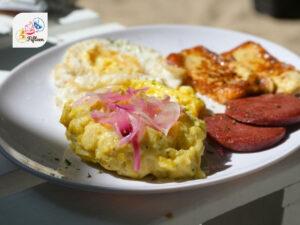
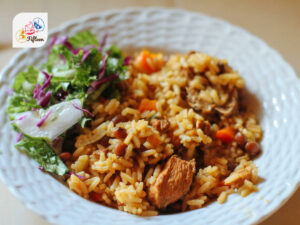
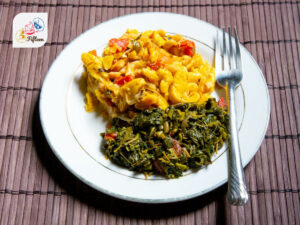
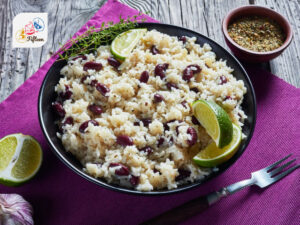
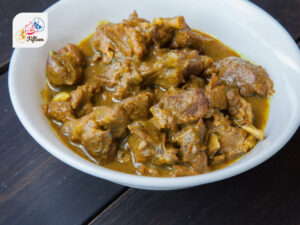
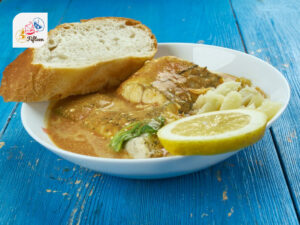
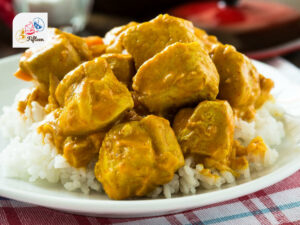
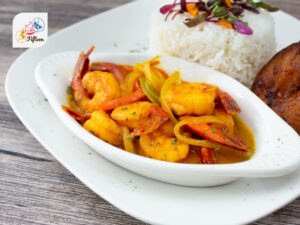
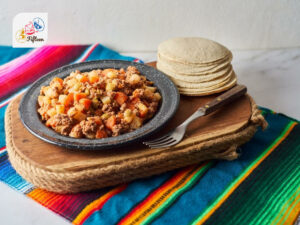
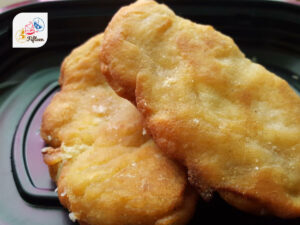


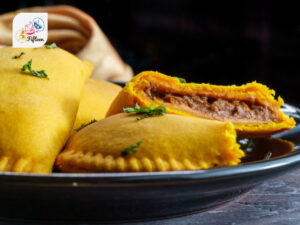
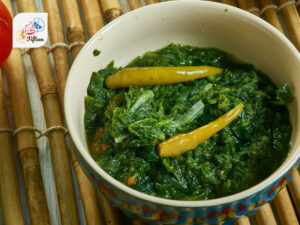
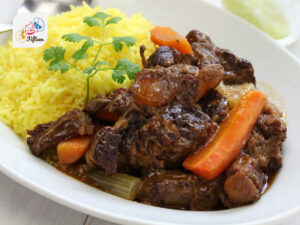
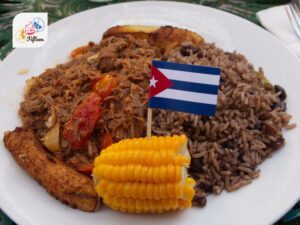
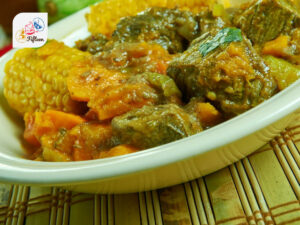
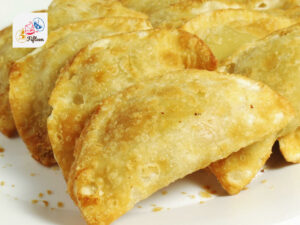
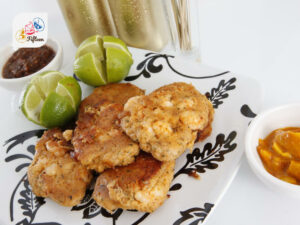
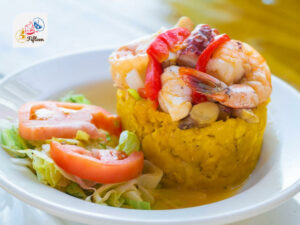
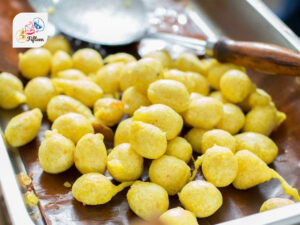
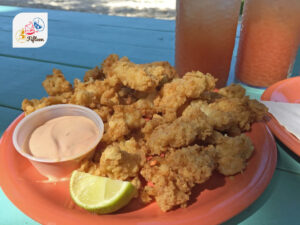
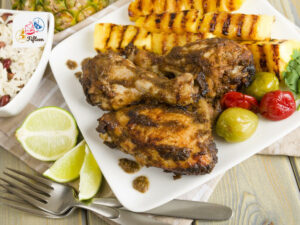

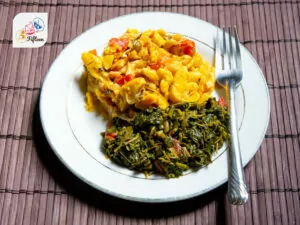
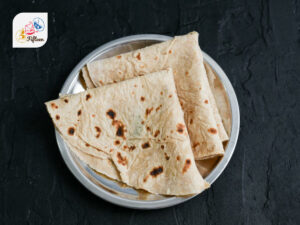
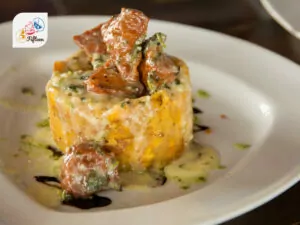
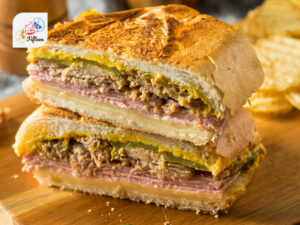
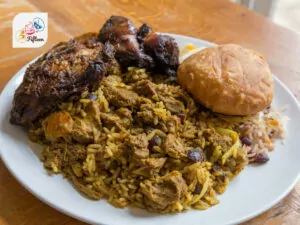
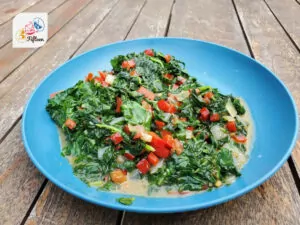

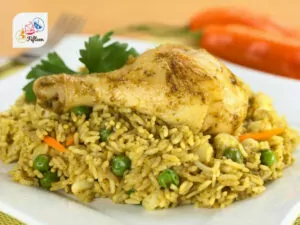
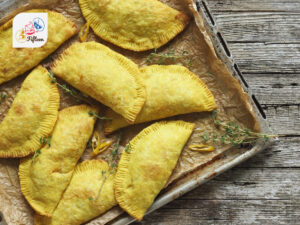
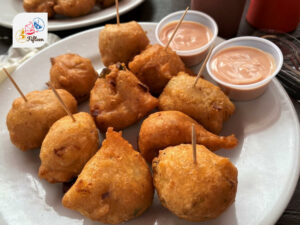
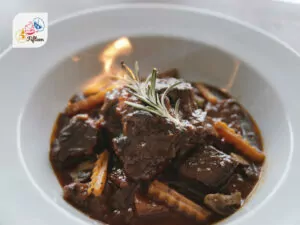
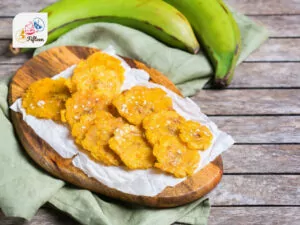
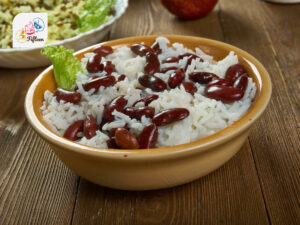
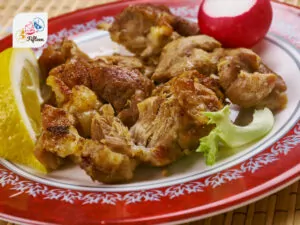
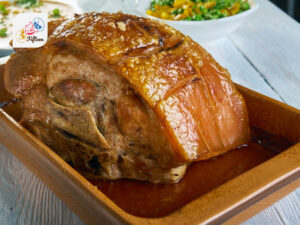
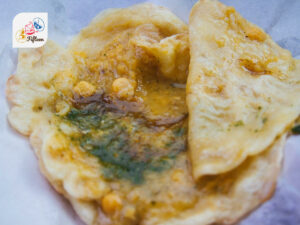
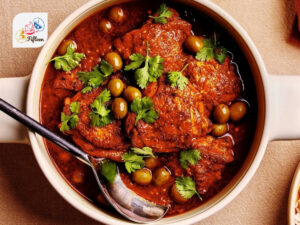
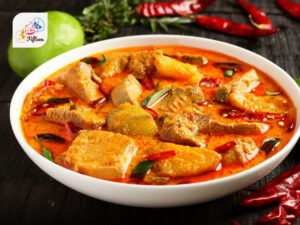
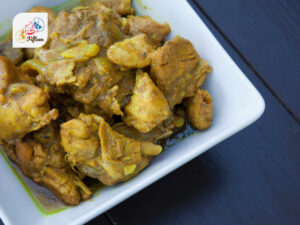
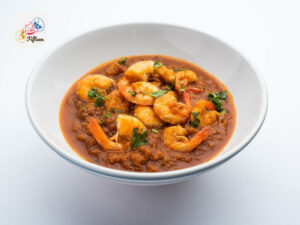
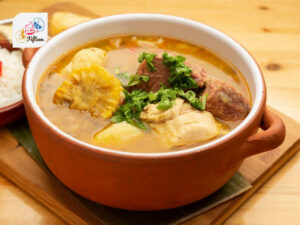
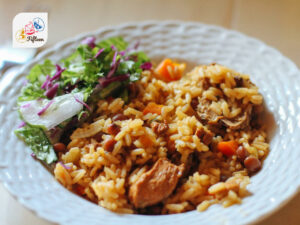
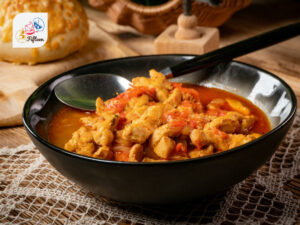
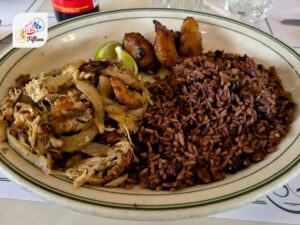
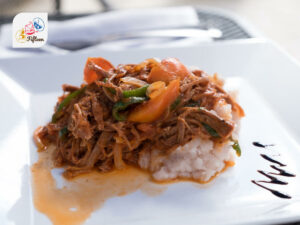
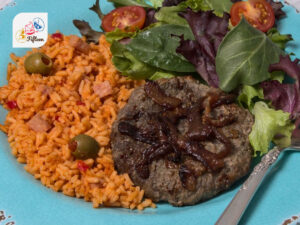
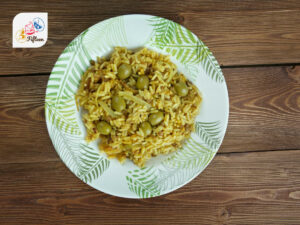
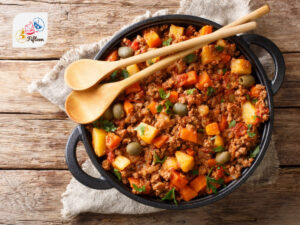
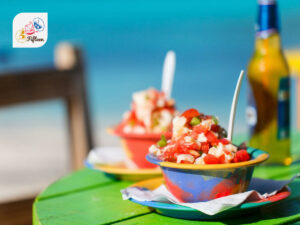
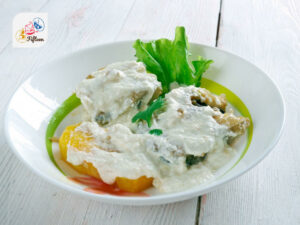
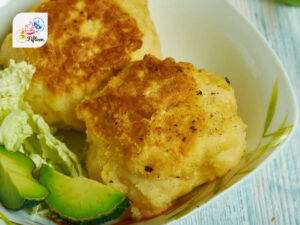
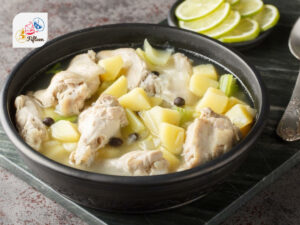
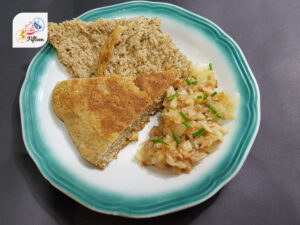
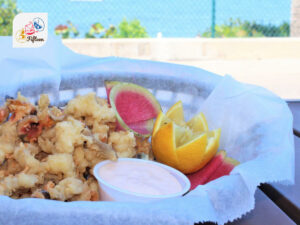
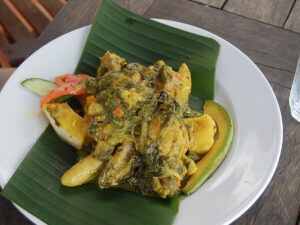
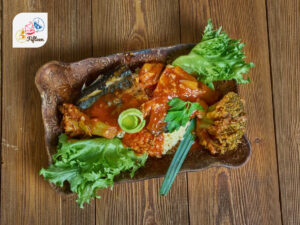
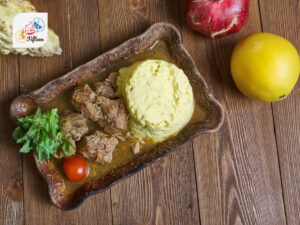
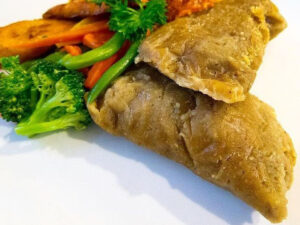
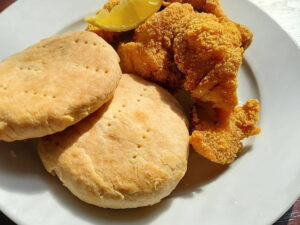
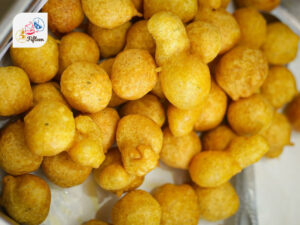
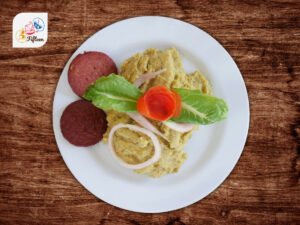
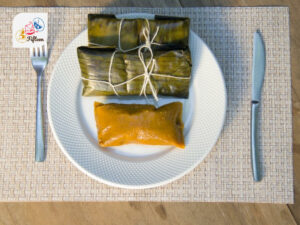

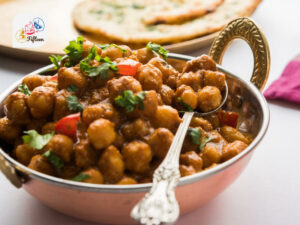
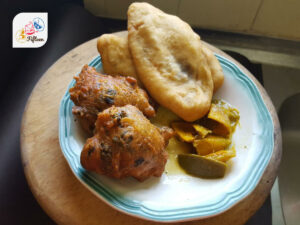
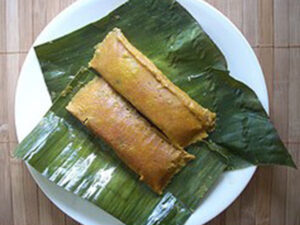

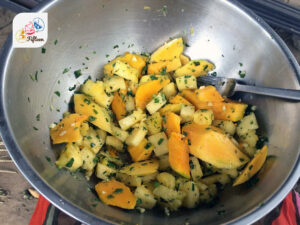
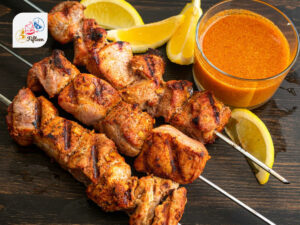
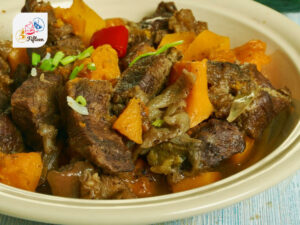
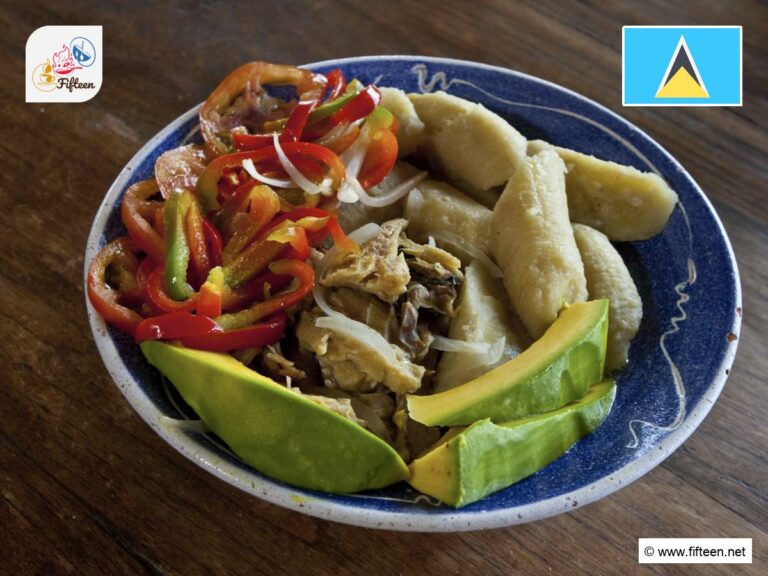
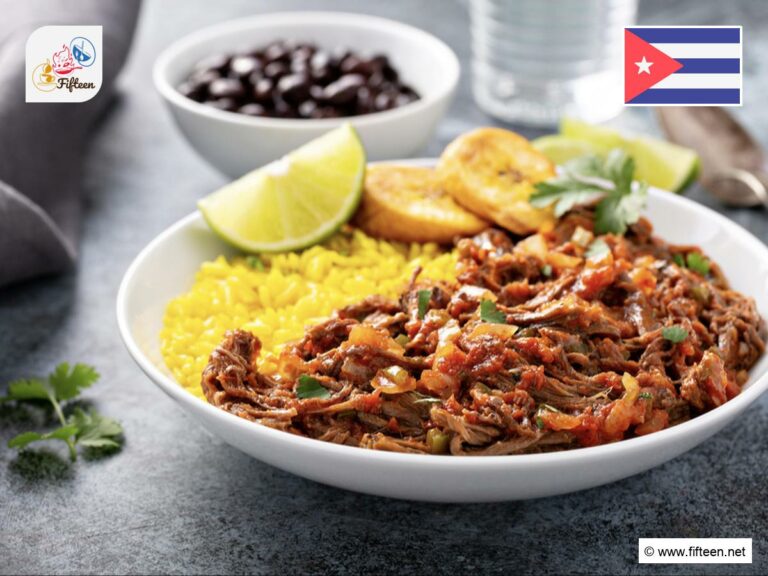
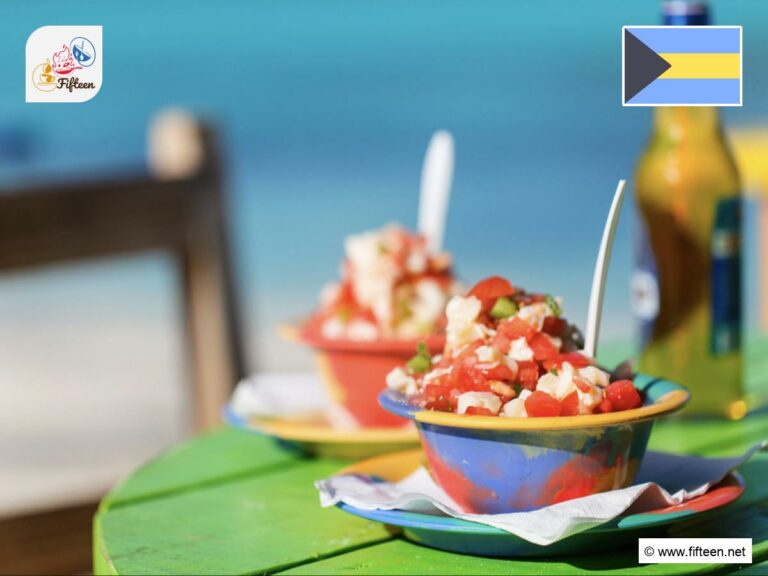
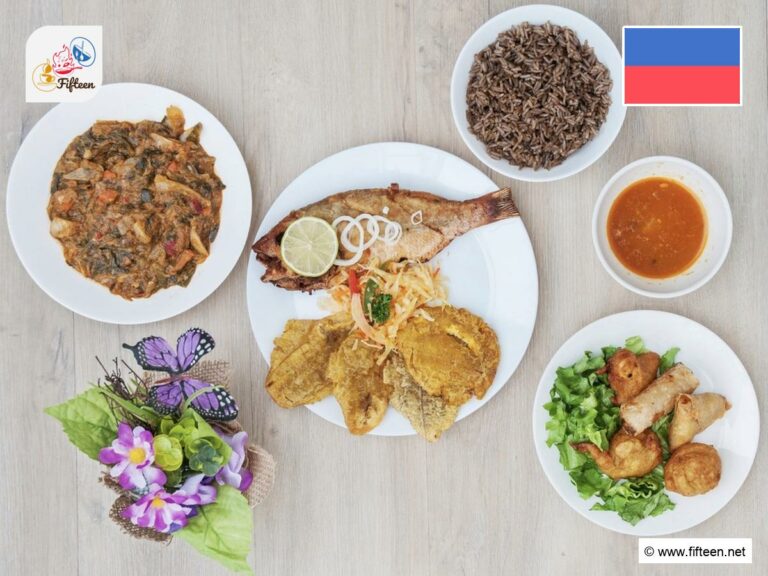
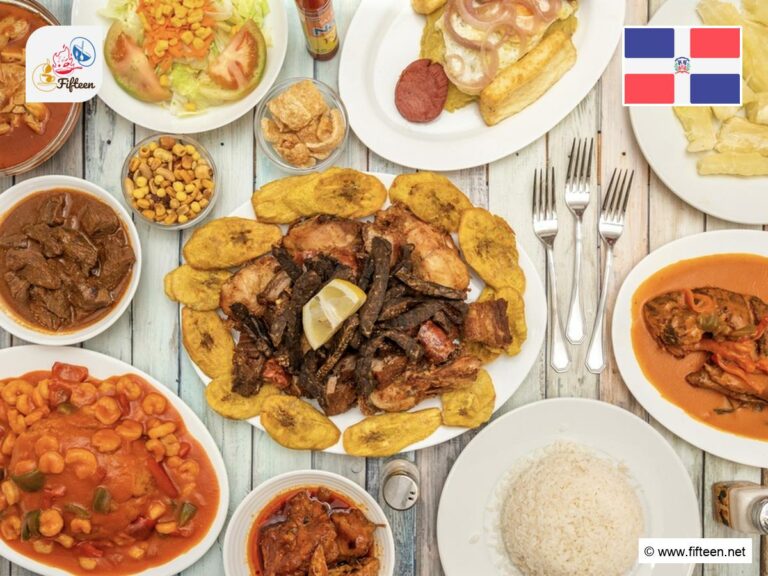
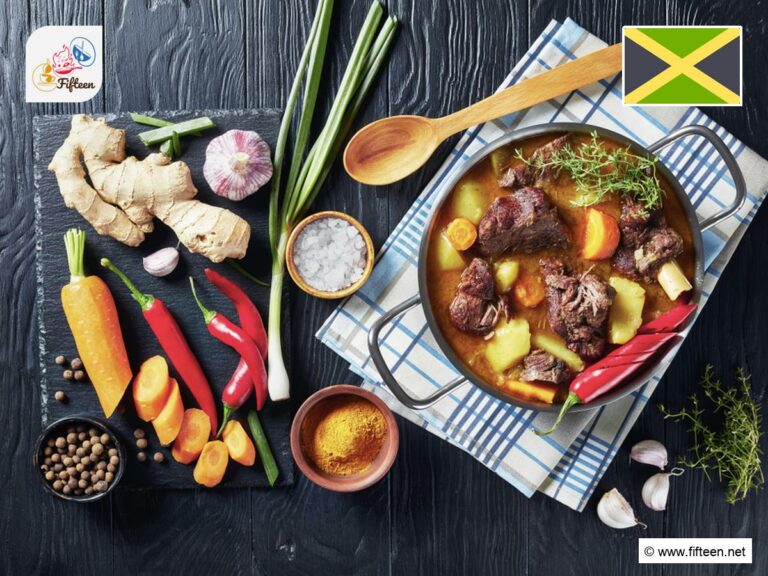
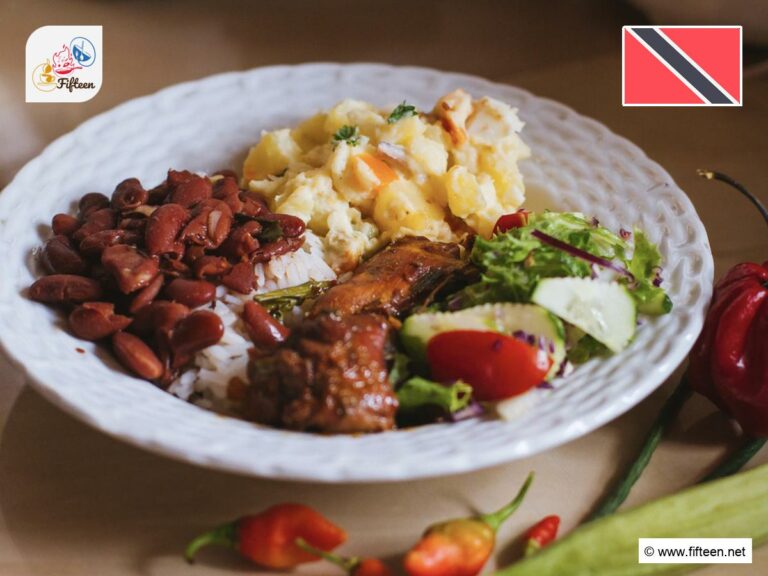
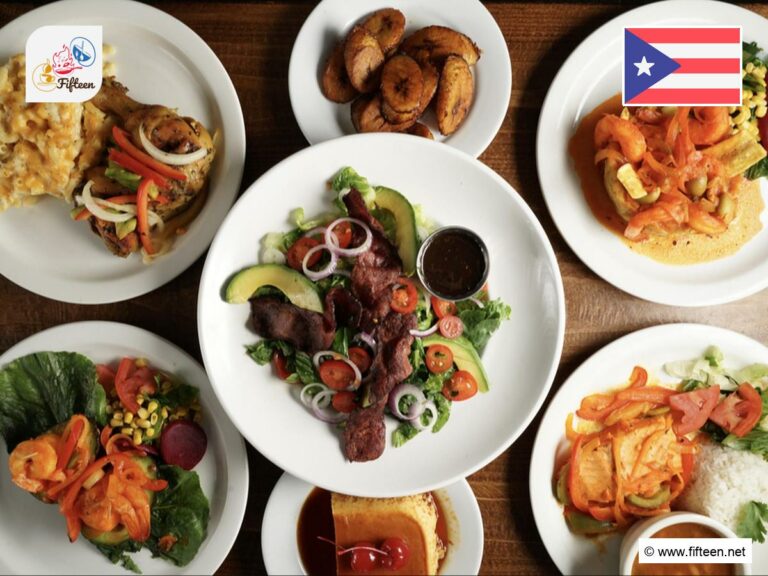
Jamie Scott
Editor in Chief, Senior Content Writer
Expertise
Home Cooking, Meal Planning, Recipe Development, Baking and Pastry, Food Editor, Cooking-video Maker, Western Food Evaluation Expert
Education
Le Cordon Bleu College of Culinary Arts
Local Community College, New York, NY
Jamie Scott is a skilled culinary expert and content creator specializing in Western cuisine. With over 15 years in the culinary field and formal training from Le Cordon Bleu, Paris, Jamie deeply understands how to blend nutrition with delicious flavors. His passion for cooking matches his commitment to making healthy eating accessible and enjoyable.
On Fifteen.net, Jamie brings a fresh perspective to classic dishes and beverages, offering readers insightful recipes, cooking tips, and a fresh view on meal planning that emphasizes taste, health, and simplicity.